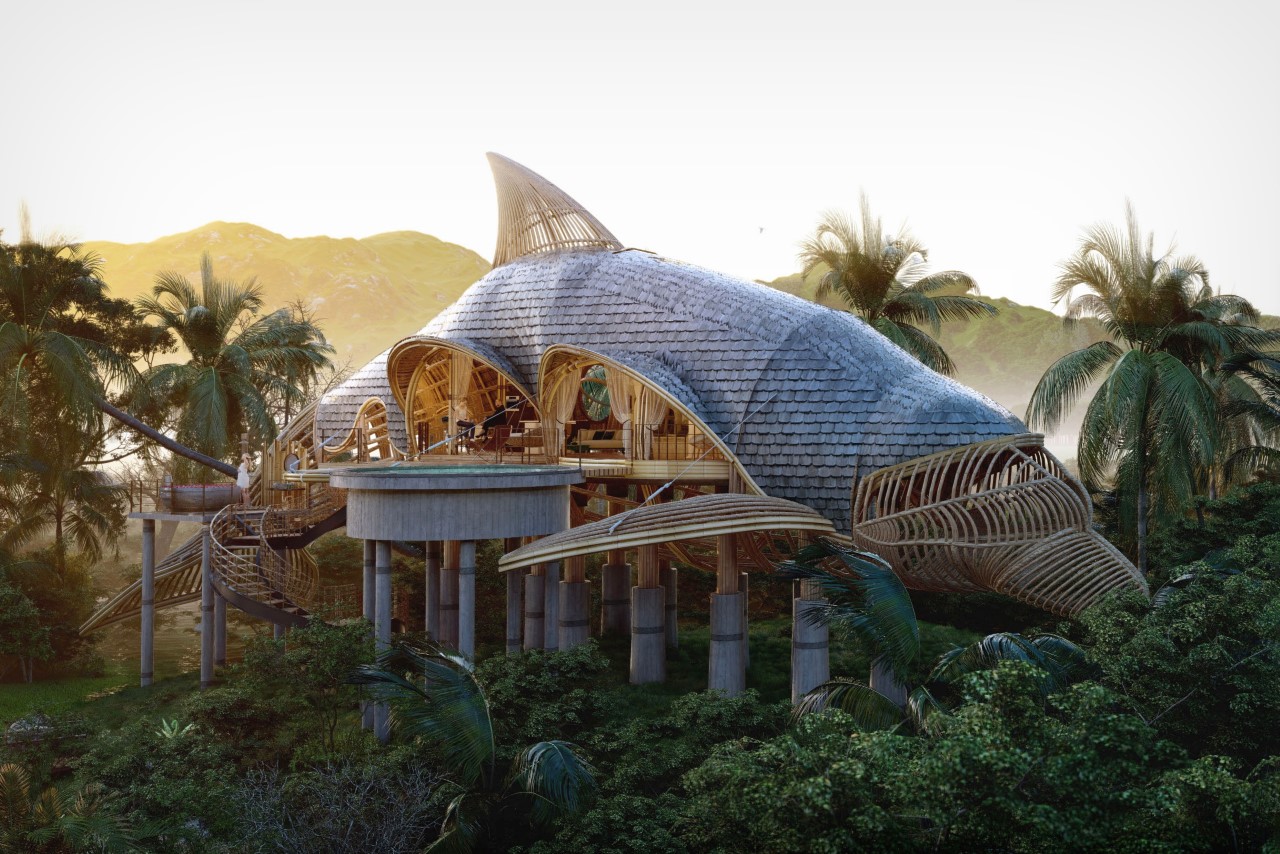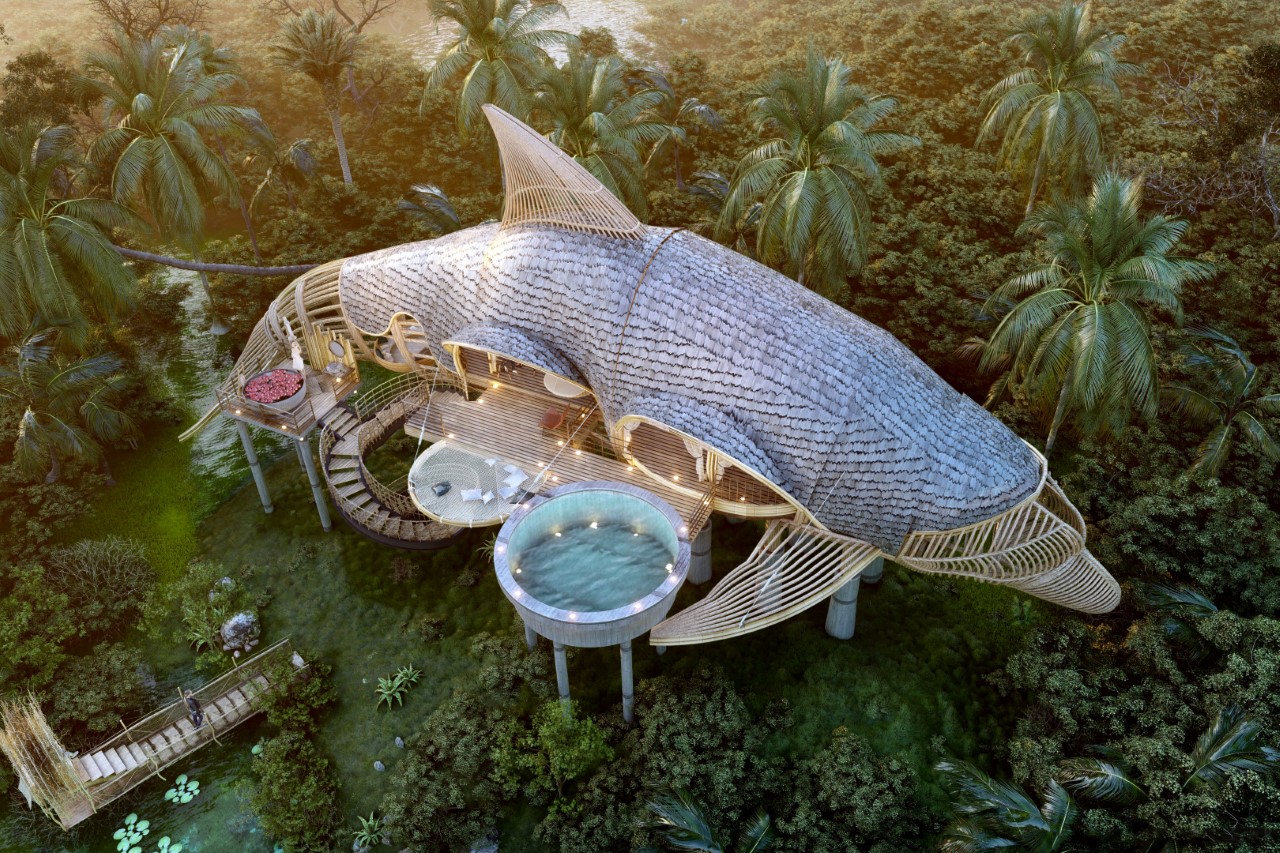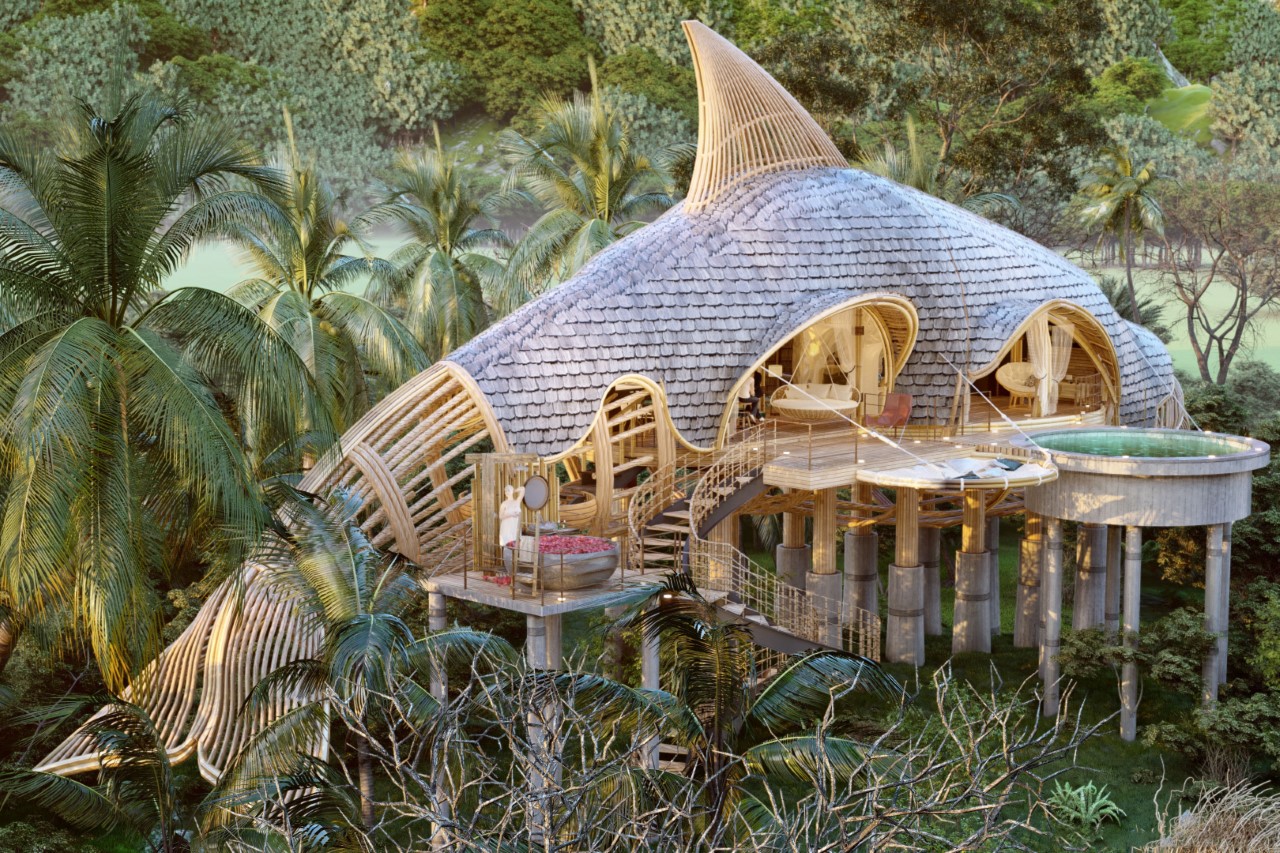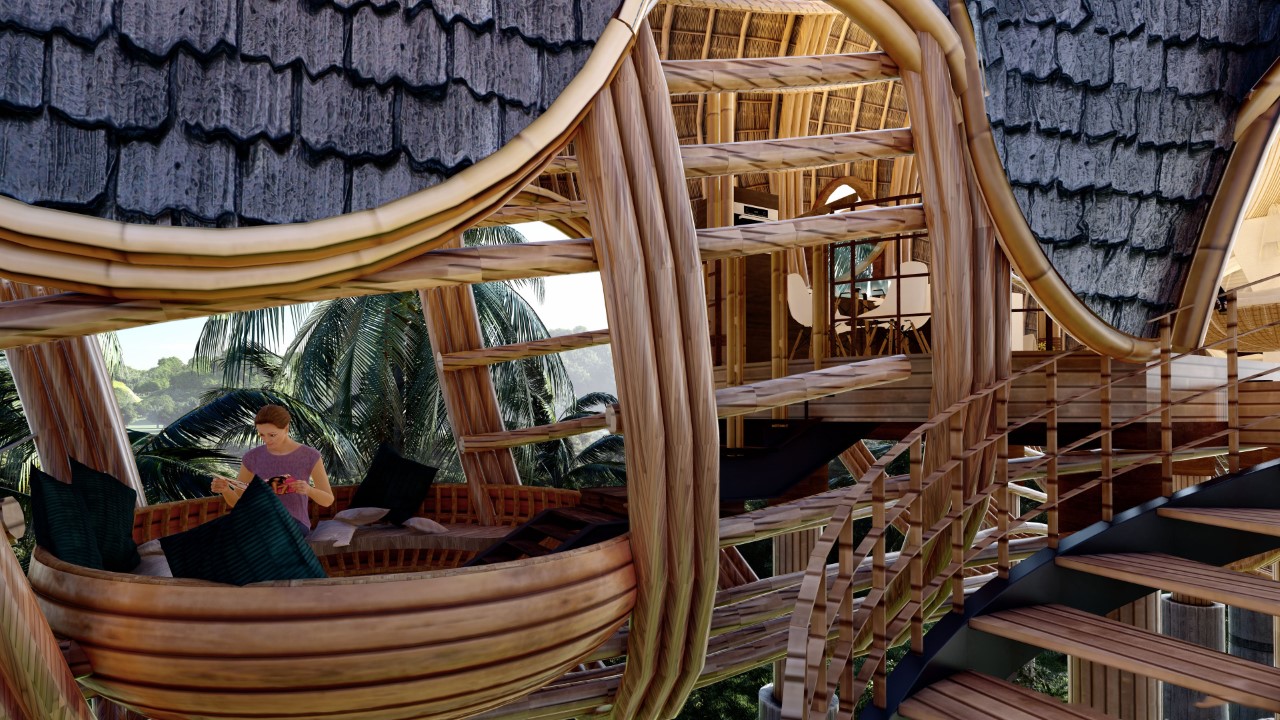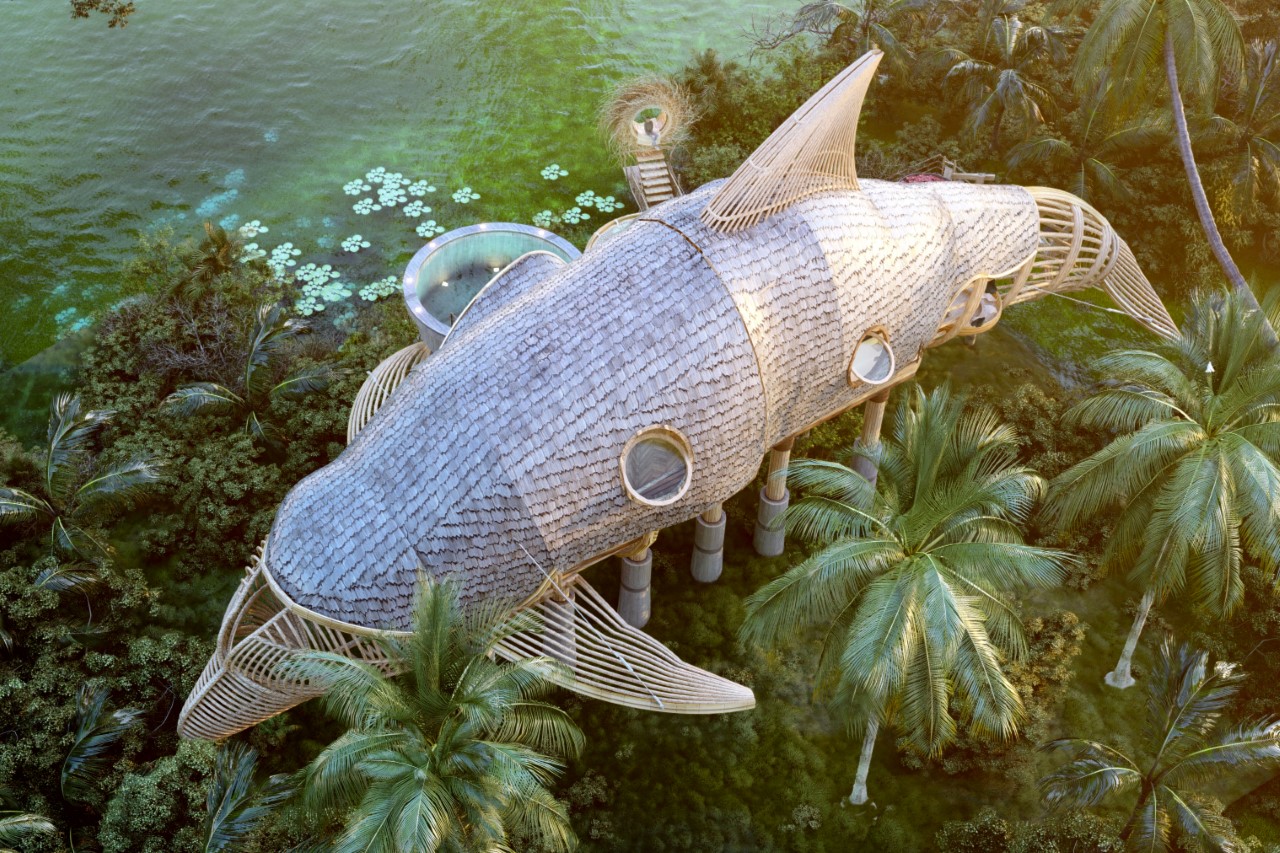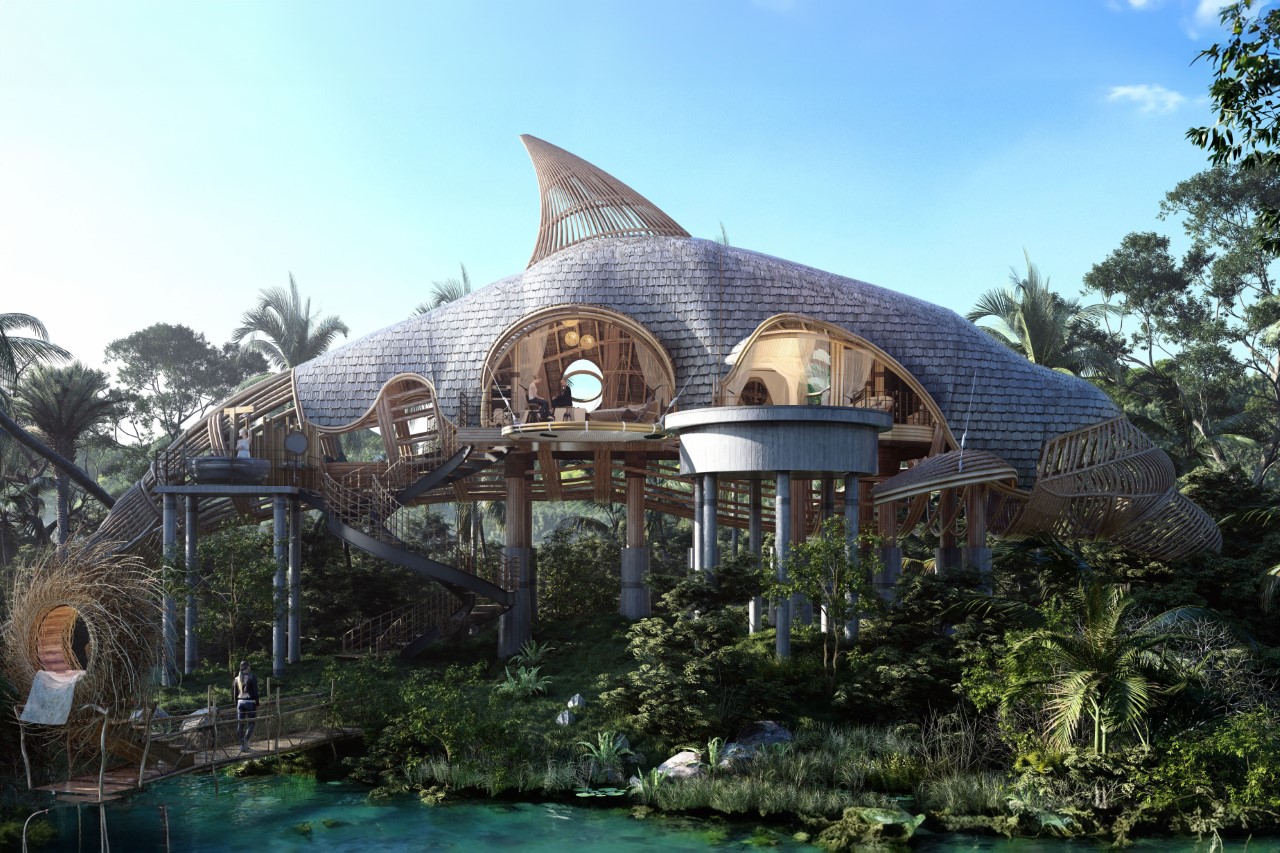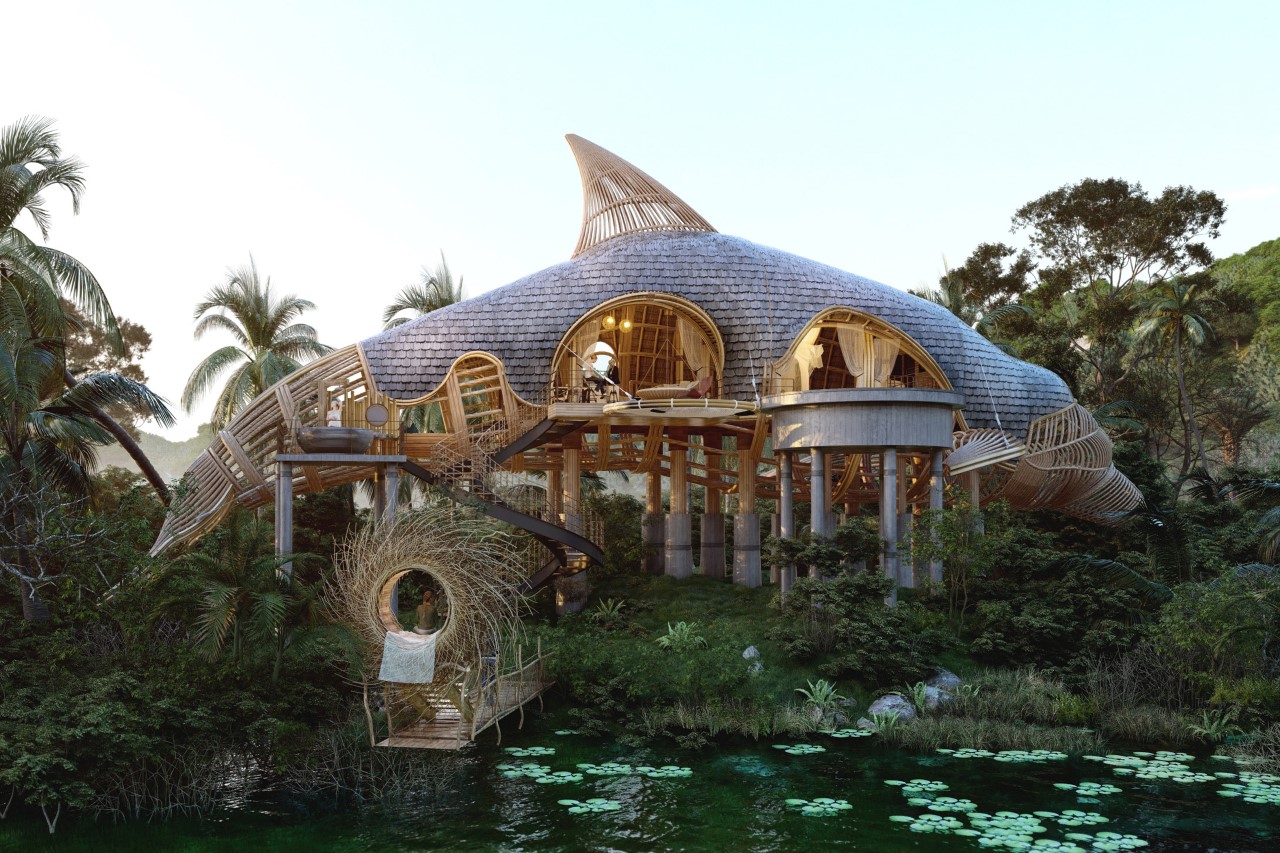Nestled amidst the lush woods of Bali, a symmetrical haven awaits those seeking solace and elegance. At first glance, it’s apparent that this villa is not just another architectural marvel; it’s a seamless blend of Japanese inspiration with a touch of Balinese flair, creating an atmosphere of understated grace and natural harmony. I find a lot of overlap between the two architectural styles.
Designer: Thilina Liyanage
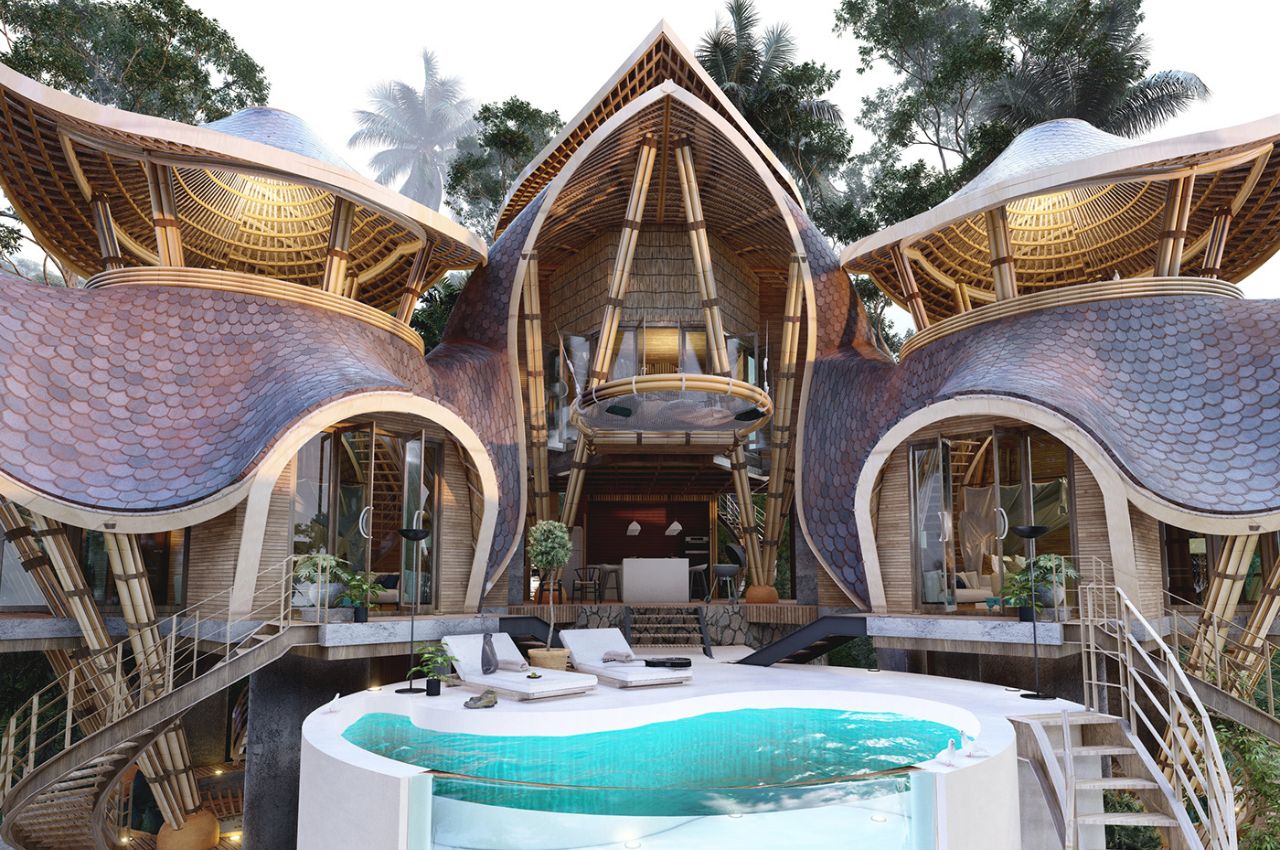
The villa’s design draws inspiration from traditional Japanese architecture, evident in its distinctive Yosemune roofs. These exaggerated curves immediately capture the eye and evoke the essence of Japanese design principles overlapping with the Balinese. But what truly sets this villa apart is its ingenious incorporation of these elements into the tranquil landscape of Bali.
Wood is the cornerstone of Japanese architecture, chosen for its resilience in the face of earthquakes. Similarly, this villa embraces the warmth and versatility of wood, creating a space that not only withstands the test of time but also invites inhabitants to coexist harmoniously with nature. Every corner of the villa exudes a sense of tranquility, with natural materials seamlessly blending into the surrounding environment.
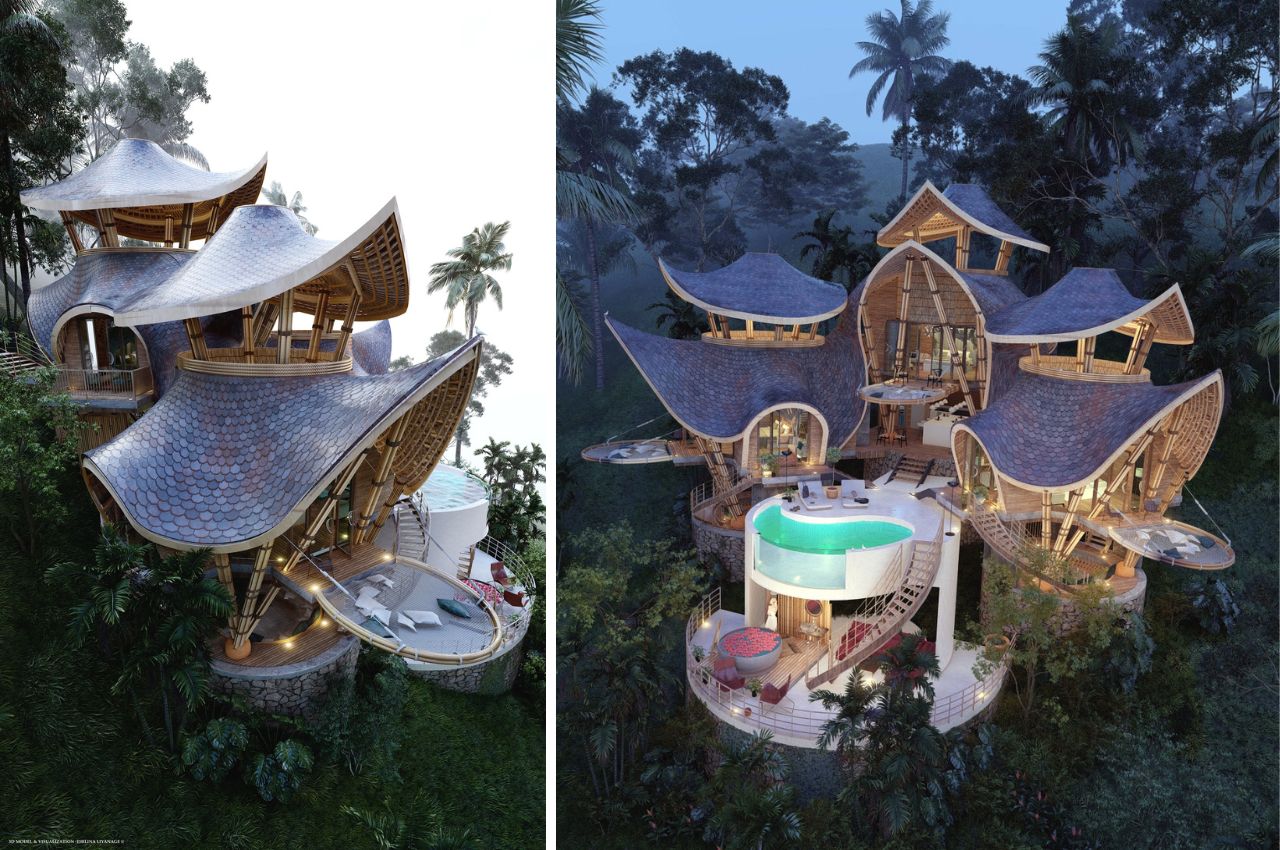
Perched on the slope of a mountain, the villa offers a journey of discovery from top to bottom. Upon entering from the top, guests are greeted by a central stairway leading to the heart of the villa. Here, an open kitchen and dining area await, seamlessly transitioning to a poolside oasis where one can indulge in a refreshing dip while savoring the beauty of the surroundings.
The bedrooms, situated on either side of the pool, offer a serene retreat with their cantilevered net seating—a Balinese interpretation of traditional balconies. Inside, wood and bamboo interiors create a cozy and inviting atmosphere, inviting guests to unwind and rejuvenate.
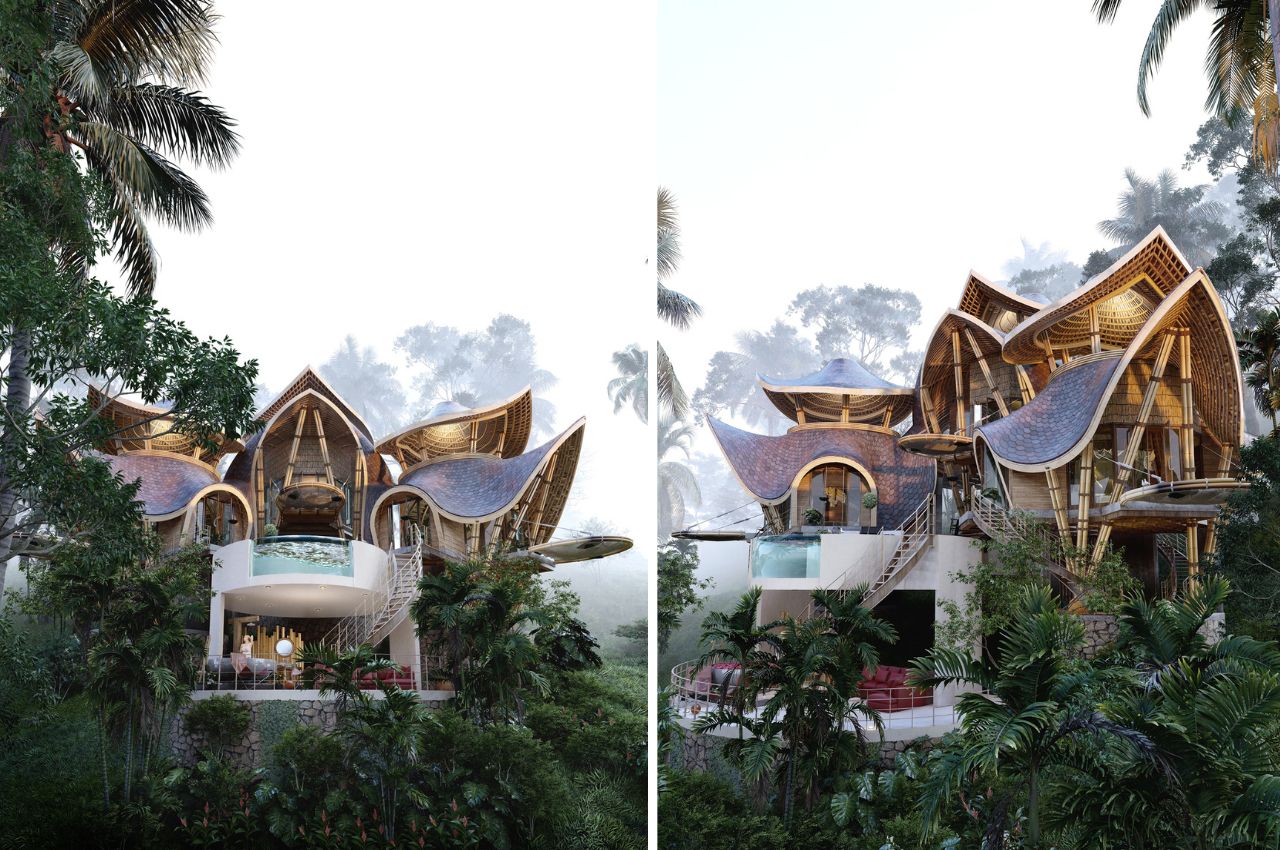
Throughout the villa, a variety of seating areas are available, each offering a unique perspective of the surrounding landscape. From day beds to sunken seating areas, there’s a spot for every mood and occasion, ensuring that guests can immerse themselves in the tranquility of the woods at any time of day.
At the lowest level, an open bath awaits, allowing guests to shower amidst the serenity of the woods—a truly immersive experience that reconnects them with nature. A distinctive element of every property in Bali!
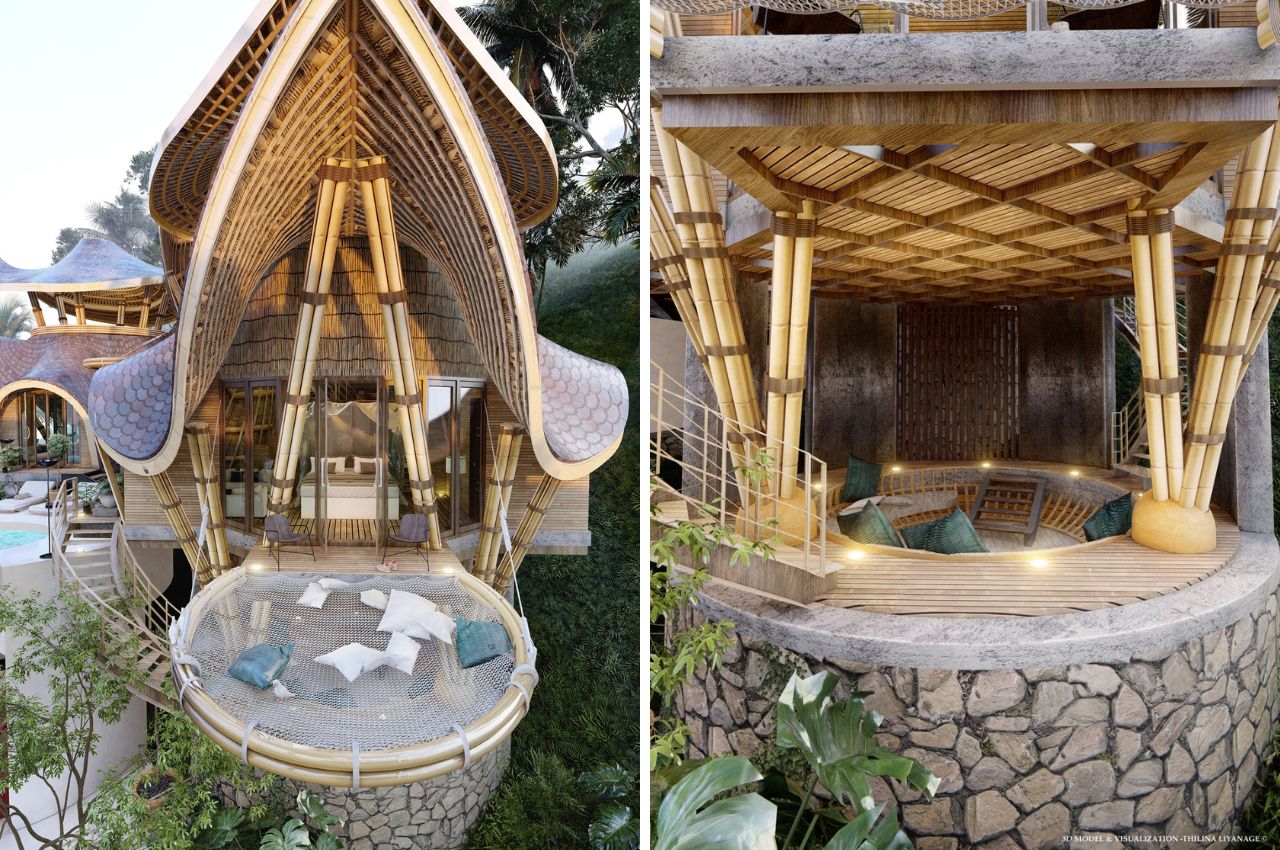
Perhaps most importantly, the villa’s design prioritizes privacy, ensuring that every room and corner offers a sanctuary away from the outside world. Whether lounging by the pool or enjoying a meal al fresco, guests can relish in the seclusion and tranquility of their surroundings.
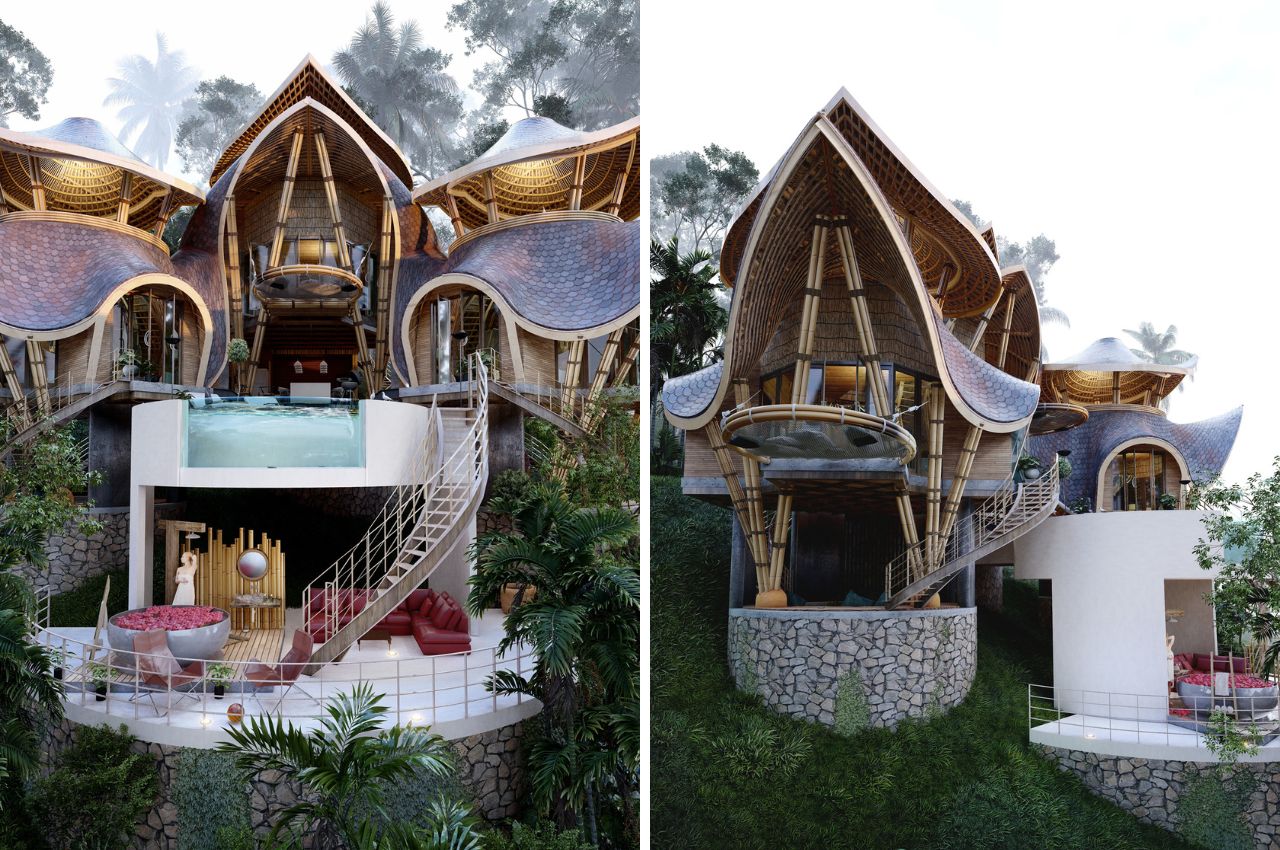
The post The Enchanting Overlap of Japanese and Balinese Architecture in a Woodland Villa first appeared on Yanko Design.
